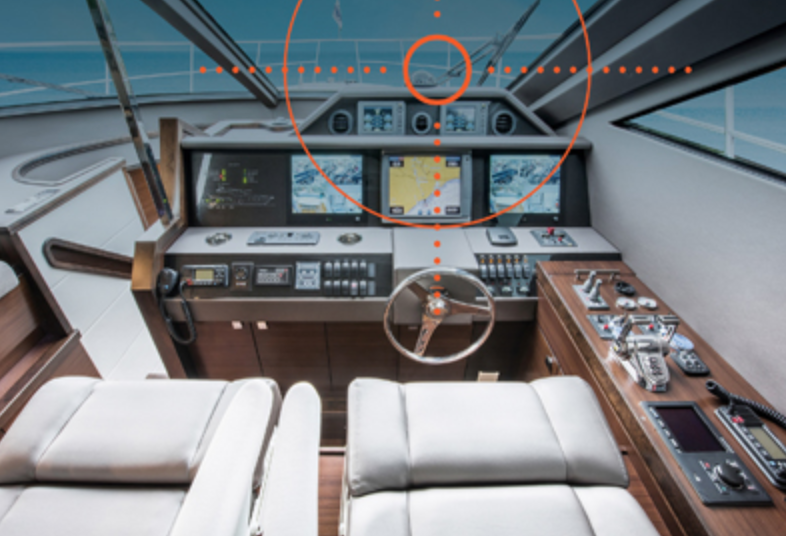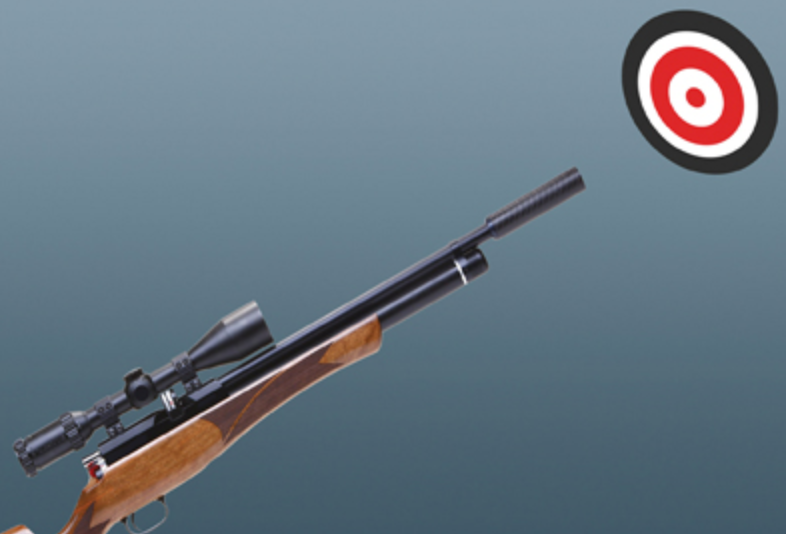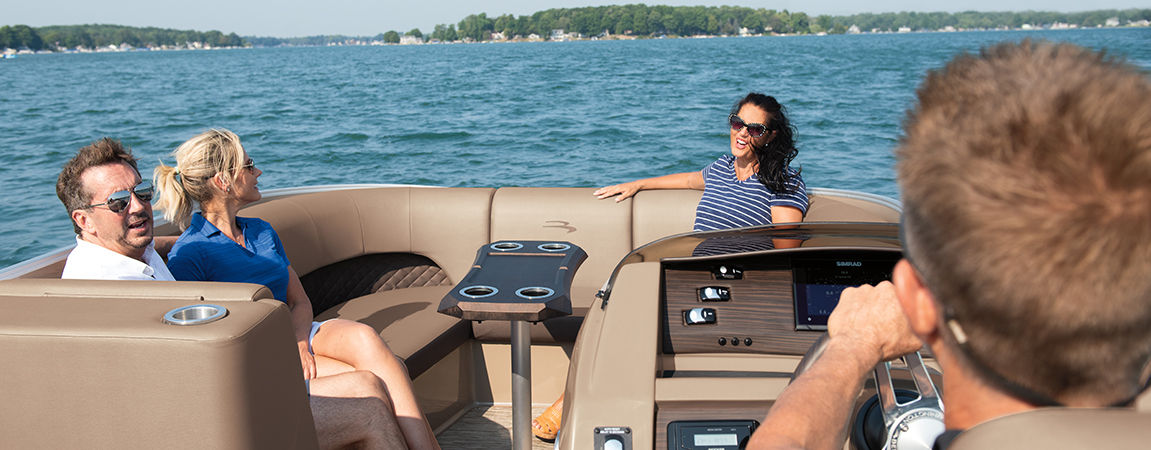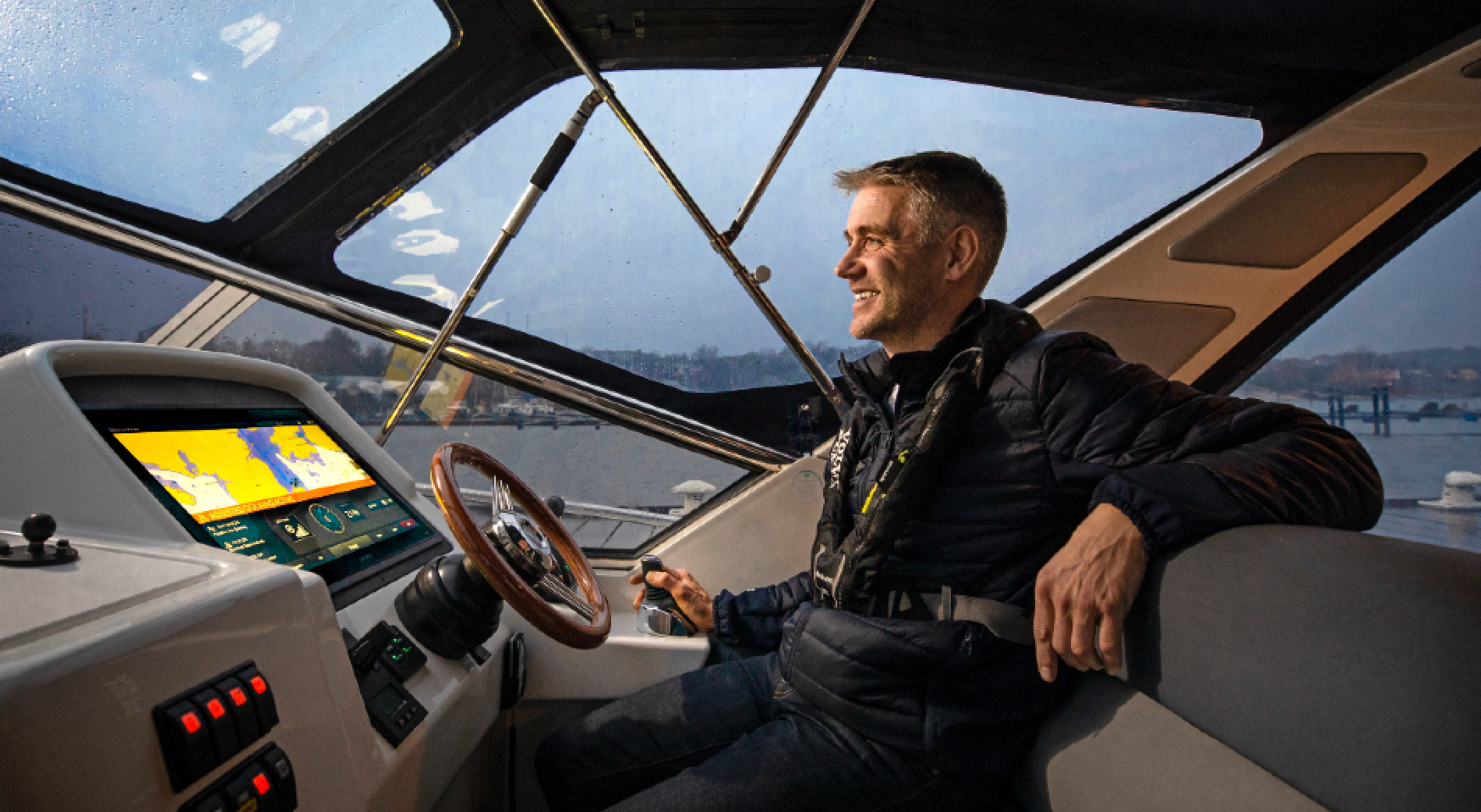How to Aim Your Boat

How often have you seen boats weaving their way across the water, unable to keep heading in a straight line? Maybe you have even experienced this snaking. Sometimes, it is because the captain is over-steering — first too far one way, then too far the other way. It is primarily because he or she doesn’t know how to aim his or her boat.
Taking Aim
When cruising, it is important to know where top dead center is so that you can steer straight. It reduces the back and forth of the wheel and over steering. But simply locating top dead center on the steering wheel is not the whole solution. We also need to know how to aim our boat so that it follows a straight line to a destination point.
Many boaters who experience this have been given some bad advice by online “experts” including the following:
- Get your steering checked. It is a mechanical problem.
- This is what I do, so you should try it.
- It’s prop walk, so you can’t do anything about it.
- V-hulls just do that. Get used to it.
- You’ll get better with practice.
In most cases, boaters simply don’t know how to aim their boat. They just wander up the lake leaving a telltale snake’s trail behind them.

How Professional Captains Aim the Boat
Think of a rifle that you aim by lining up the near sight and the far sight with the target. Now think of your boat as the rifle. You have to know where the near and far sights are before you can aim your boat at a buoy or landmark or even dock it.
Sailors have a huge advantage because the helm is center of the boat, so they can line up their mast and pulpit with their target. Most powerboat helms are on the starboard side, so power boaters have to calculate their sights.
For your near sight spot, pick something right in front of you on the helm or windshield such as the compass, the corner of a screen or a windshield wiper arm. For the far sight spot, pick a location on the bow rail that is directly ahead of the helm between your near sight and the landmark on shore that you are headed for.

To locate your ‘far sight’ at just the right spot on your bowrail, do the following:
- Take the boat out on a calm day—no wind, no current.
- Set the throttle(s) in forward at about 800 rpm.
- Have a crewmember sit on the forward deck on the centerline facing the starboard side of the boat.
- Straighten the wheel to where you think you are going straight and aim for your target on shore.
- After about 30 seconds of idling this direction, look over the transom at your wake. Is it straight or is it curved?
- Adjust the wheel to straighten it.
- Once your trail is perfectly straight and you are aimed at your target on shore, have your foredeck person reach out and touch the bow rail to locate that ‘far sight spot’ on the bow rail.
- Remember where this spot is on the bow rail.
- Now test to confirm that it is your far sight spot.
- Line up your near sight, your far sight and your target and steer straight toward it.
- After 30 seconds or so, check your wake to verify that it is straight. If it is, you have the right location for your ‘far sight spot.’ If it isn’t straight, adjust as necessary.
- Wrap that far sight spot with a piece of black electrical tape.
- Then you, or anyone who takes the wheel can line up the near and far sight with the target on shore.

Why Aiming is important
Over a long distance on one leg of your trip, using the wrong ‘far sight spot’ could put you on the rocks en route to that distant buoy.
Over a short distance like docking, a little is significant. Using the wrong ‘far sight spot’ could cause you to scrape down the side of your slip neighbor’s boat or your dock.
If you don’t use the right location for your bow rail far sight spot, you cruise up the lake headed the wrong direction and have to keep correcting. Since the shortest distance between two points is a straight line, you are wasting time and fuel when you zig-zag from point A to point B. In open water, you have space to do that, but in the harbor, fairway or slip, we must be accurate.
Some boaters line up their anchor windlass or pulpit with the object they are aiming for, but those points are on the boat’s centerline and the wheel is off to starboard. The boat isn’t headed to the target, requiring continual correcting as you get closer to it.
The only time you would line up the anchor davit or pulpit is if your wheel is in the center of the boat like. When your wheel is on the centerline, so are you and your eyes.

Technical Stuff
Some will tell you that you need to understand the technical stuff like propeller torque “prop walk” and how it influences your boat. You don’t need to know any of this. You just need to know how your boat responds to the wheel, shift(s), and throttle(s) so you can get it to do exactly what you want it to do. It’s results that count, and the easier and less complicated, the better.
How do I do it?
I line up my near-sight spot with my far-sight spot on my bow rail with my destination where it’s a far-away landmark, cleat at the end of the dock, the inside end of the dock, or the space at the end of the slip.
When turning from the fairway into my slip, I turn the wheel with my left hand, so the ‘far sight spot’ on the bow rail lines up with my new target in the slip.
When the boat has completed the turn and I want to go straight again, I palm the wheel with my left hand back to the top (electrical tape spot) to recover from the turn. Then I know the wheel is straight or ‘top dead center’ and the boat is going to go straight. I confirm by checking that my ‘far sight spot’ is on the target within the slip.

Complicated?
This may sound complicated, but you only have to do it once. After that, it is just a matter of using that tape on the bow rail to line up with your target, either on the water or in the confines of the harbor or slip. It will become second nature with practice and simplify your docking.